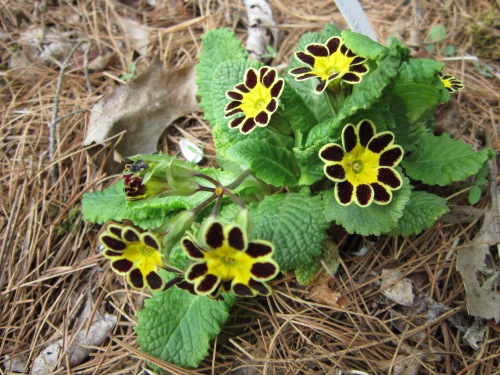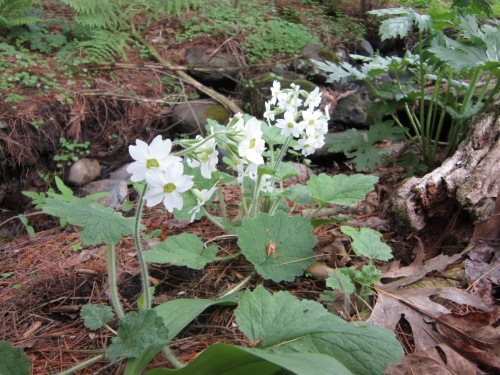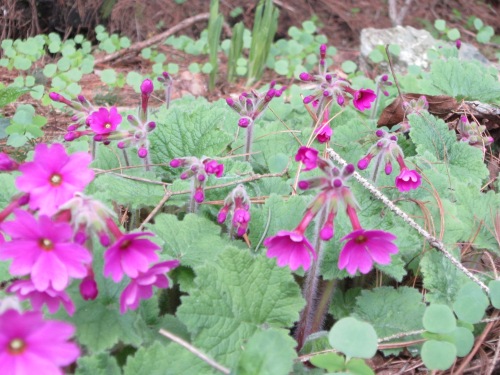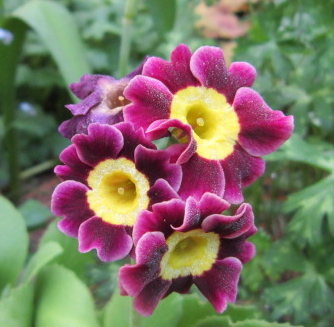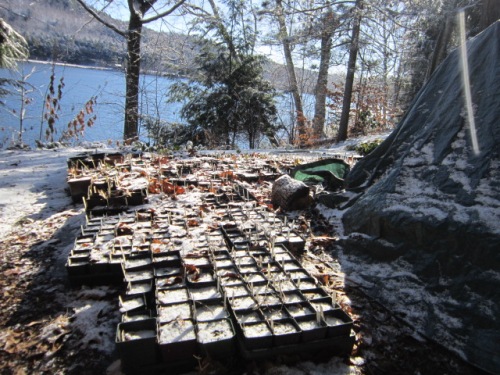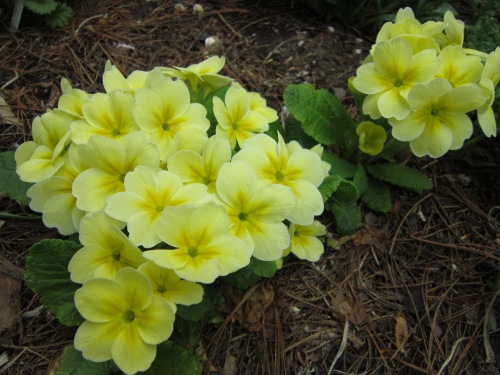I’m very late in posting an update on the show….after in my last post I promised to keep you updated on the show happenings! But I’m feeling it’s better late than never…so here goes.
The weekend was very busy as you can imagine, I stopped on the way down to Hillside Nursery in Shelburne Falls, Mass. A wholesale grower of unusual woodland plants, some native to the US and lots from Asia and Europe. I had placed an order with Peter Joppe, the owner, a few months back in anticipation of the Primrose Show and most of his plants sold the first day! The plants of his that didn’t all sell such as Anemonopsis macrophylla and Cornus canadensis I’ll have for sale at the NARGS annual meeting later this month (see my calender of Events page). I would love to post pictures here but I didn’t remember to take any of my tables of plants until later and then realised my camera batteries were shot! But here’s a link to his website.
Friday included the garden tours to 3 private gardens in Petersham, Mass. The first was to Peter George’s garden which included lovely rock gardens that were bursting with all manner of choice alpines, peonies, Primula, Iris, Epimedium and so many other treasures! I mistakenly deleted the photos I took here so you’ll just have to imagine it! Sorry!
The next garden was to Abby Rorers’ wonderful shade gardens and small greenhouse which was full of her collections of Gasteria, Haworthia and mini Aloes! I used to collect many of these succulents too, but now that I live on a shady & wooded piece of heaven I had to give those plants away. Abby’s gardens were so sweet and full of perfect examples of shade loving Primula polyanthus, Epimedium, Arisaema, Anemone nemerosa and many others. Sorry but no pictures for here either.
Our next garden visit was to Bruce Lockhart’s woodland garden and new, still under-construction gardens. Here were large old clumps of Erythronium ‘Pagoda’ with their large yellow bells, and a huge patch of Podophyllum peltatum, the native Mayapple. There were massive stands of Epimedium and Primula vulgaris. You will be happy to know I did get a few photos of Bruce’s gardens…whew!!



Pophyllum peltatum
After the garden tour it was hurry up to Tower Hill to set up my tables of plants for sale! And to get my pots of entries onto the show benches. It takes time to make each plant look its best, you’ve got to look very closely at each leaf, flower, bud and the pot itself for any blemishes. You must decide which side of the plant will face out towards the judges discerning eyes, so you’ve got to arrange the flower stems & leaves just so. Clean the pot of any soil bits and debris that might be clinging to it set it in a saucer and place it on the bench in the correct category. Even after days of nurturing each plant and lovingly placing it among all the other contenders you just never know what will catch the judges eye and deem your plant either a winner or ….I can’t really say ‘loser’ but one that isn’t up to standard.
Here’s a photo of my ‘Best in Section’ P. polyanthus Cowichan Garnet, grown from seed I got in the APS seed exchange last year.

Best in Division Cowichan Garnet
Friday night brings us to the anticipated dinner at Matt & Joe’s house, gardens & greenhouse! We all look forward to this event every year and it is always delicious! Matt is a fantastic cook so we always know we’ll be well fed. This year was especially fun as there was a ‘theme’! Silly British Hats in honor of the royal wedding! There was pub food on the menu and hats did appear!

Mary & me modeling our hats. (I'm on the left)
We had such a fun time and greeted many new attendees for this years show. The greenhouse was full as always with so many unusual bulbs, tropicals, Clivia, Orchids and other oddities. Matt Mattus has a wonderful blog I follow on all things horticultural….check it out here.
The rest of the weekend was full of activities such as an awards dinner, a lecture by renowned British plant explorer Chris Chadwell on seed collecting in the Himalayas, selling loads of my plants and just plain fun with friends who are also crazy about Primula!
I can’t recommend this group more! Our next meeting will be in CT at the famous gardens of fellow members Nick Nicou & Carol Hanby. Their Rhododendron collection is famous and the gardens are extensive and full of Primula! If you would like more information about the meeting plans or just want to chat about primroses leave me a comment and I’ll get back to you!
Don’t forget every photo is clickable for enlarging and added commentary.
Read Full Post »
















